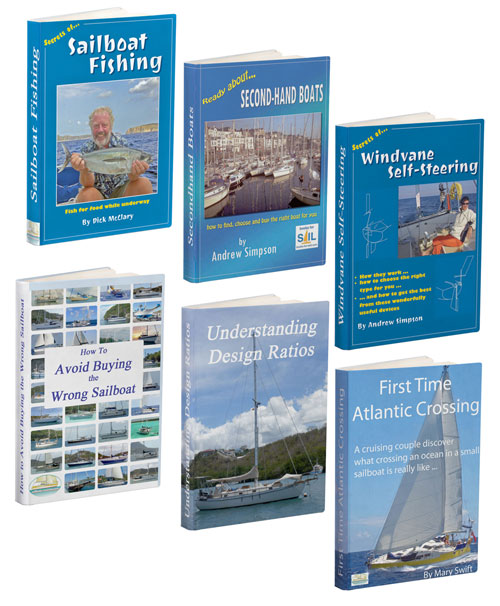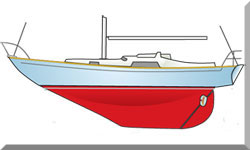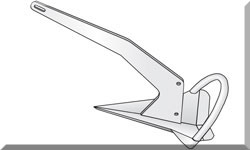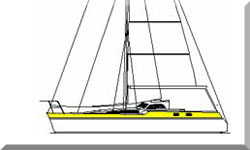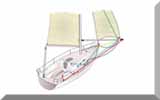- Home
- Buying a Used Sailboat
Buying a Used Sailboat: A Guide to Getting the Perfect Vessel & Sailing Away
In a Nutshell...
Buying a used sailboat is a deeply personal and often complex process that rewards thorough research and patience. The most effective approach is to clearly define your sailing goals and realistic budget (including ongoing maintenance costs), conduct a meticulous in-person inspection and sea trial, and crucially, hire an independent, qualified marine surveyor. Never skip the survey; it's your only true safeguard. By treating the purchase as a safety-first project, you're far more likely to find a reliable vessel that transforms your sailing dreams into reality.
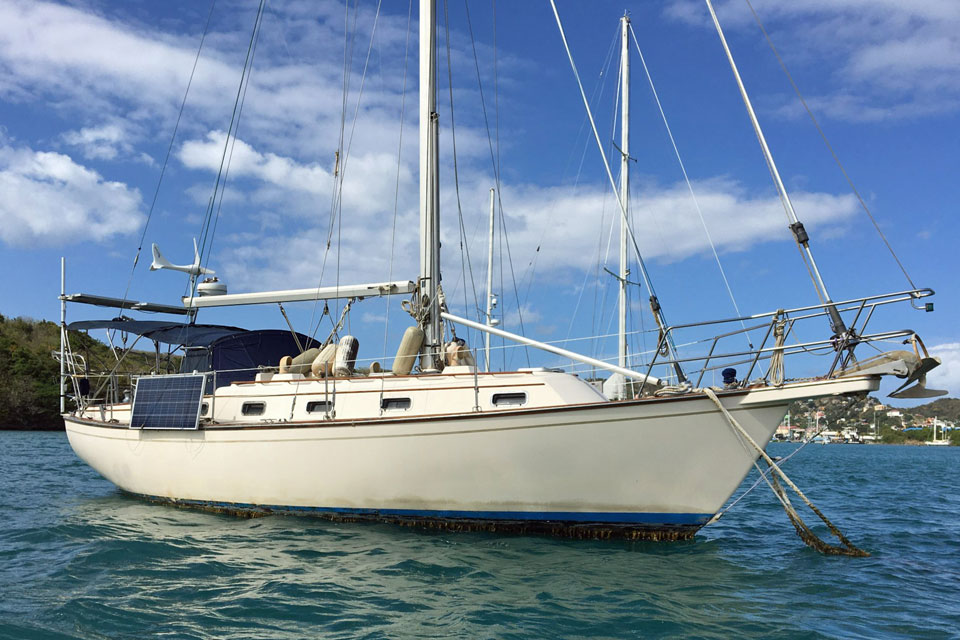 Has this Island Packet 37 got your name on it?
Has this Island Packet 37 got your name on it?Table of Contents
- Foundational Knowledge: Design & Terminology
- Step 1: Defining Your Expectations & the Depth of Your Wallet
- Step 2: The Online Hunt & Being an Investigator
- Step 3: The Critical Inspection & Sea Trial
- Step 4: The Offer & The Non-Negotiable Survey
- Step 5: Understanding the Paperwork & Finalising the Deal
- The First 90 Days: Essential Post-Purchase Actions
- Frequently Asked Questions
- Summing Up
For most of us, the idea of buying a sailboat starts with a feeling: the salt spray on your face, the sound of the wind filling the canvas, and that peaceful, mesmerising rhythm of the ocean. It's an intoxicating dream that quickly leads to late-night scrolling through online listings, envisioning yourself at the helm.
But as a sailing writer who's been in this industry for decades and, more importantly, as a sailor who has been through the process myself, I can tell you that the reality of buying a used sailboat is a little more complicated. It’s a bit like a high-stakes treasure hunt. You'll fall for a beautiful photo, get your heart broken by a hidden problem, and eventually, with enough patience and a clear head, you'll find "the one."
Before diving into the listings, you should first ask yourself some fundamental questions. If you’re still wrestling with the basics, I strongly recommend reading:
- Should I Buy a Boat? (Your guide to the initial decision).
- The True Cost of Boat Ownership (Because the purchase price is only the beginning).
Once you've clarified your personal 'why' and what your realistic financial outlay will be, this guide will walk you through the rest of the process, helping you avoid the common pitfalls and secure a boat that will bring you joy for years to come.
Foundational Knowledge: Design & Terminology
To make a truly informed purchase, you need a basic understanding of how hull and keel design dictates handling, and a firm grasp of the industry terminology. This foundational knowledge is key to vetting a listing before you ever step aboard.A.
A. The Evolution of Hull & Keel Design
Modern yacht design, predominantly fibreglass, is often defined by the keel. Knowing the difference between the most common types helps you filter listings based on your cruising style:
| Keel Type | Description & Purpose | Pros & Cons for a Buyer |
|---|---|---|
| Fin Keel | High-aspect, deep profile, separate from the rudder. | Excellent **performance** & speed; **Restricted** shallow water access. |
| Long Keel | Integral part of the hull that runs most of the length. | Excellent directional **stability** & safety offshore; Slower manoeuvring in marinas. |
| Encapsulated Keel | Fin keel that is moulded into the hull (no bolts). | Very **strong** (impact resistant) & low maintenance; Adds weight, requires more ballast. |
| Lifting Keel | Allows the draft to be reduced significantly. | Ideal for **estuary cruising** & drying moorings; Mechanical complexity & maintenance. |
B. Key Terminology & Documents
Confusion over terminology can lead to significant financial mistakes. When reading listings and contracts, remember these terms:
- LOA (Length Overall): The length used for marina fees, insurance, and most official paperwork.
- LWL (Length at Waterline): The length of the hull that is immersed, largely dictating the boat's maximum hull speed.
- Draft: The minimum depth of water the boat needs to float, governed by the keel.
- Survey (or Condition Survey): An independent, professional assessment of the vessel's structural and mechanical condition—a non-negotiable step in the purchase process.
Step 1: Defining Your Expectations & the Depth of Your Wallet
Before you even open a single brokerage website, you need to answer a few fundamental questions. This is the single most important step and one I, frankly, failed to take seriously enough when I bought my first boat. I got so caught up in the idea of just having a boat that I didn't think through what I actually wanted to do with it.
What is Your Sailing Style?
Your answer here dictates everything—the size, design, and necessary equipment of the boat.
- The Weekend Warrior: Day-sailing on a local lake or protected coastal waters? You might need a smaller, simpler boat, perhaps a trailer-sailer.
- The Coastal Cruiser: Planning extended trips along the coastline? You'll need comfortable bunks, a proper galley, and reliable auxiliary power.
- The Offshore Adventurer: Dreaming of an Atlantic crossing or a multi-year circumnavigation? This requires a significantly heavier, stronger, and more comprehensively equipped vessel with robust systems.
What is Your Realistic Budget?
This is where the dream meets the accountant. The purchase price is just the down payment. As I learned the hard way, the running costs can be a significant surprise. A good rule of thumb I always advise is to budget at least 10% of the boat’s purchase price annually for maintenance, insurance, and moorage. That's for a well-maintained boat. For a 'fixer-upper', that number can easily double or even triple.
Don't forget, you'll need protection for your investment, so consider:
- Do I need Boat Insurance? (An essential read before you finalise the purchase).
The Simultaneous Sale: Managing the Transaction Flow
For many experienced sailors, the journey to a new boat involves selling the old one. This creates a challenging logistical and financial knot that needs to be untangled carefully. The primary risk is getting caught paying for two sets of insurance, moorage, and maintenance.
Whether you choose a private sale or use a broker, the process is detailed and requires as much care as your current purchase. By treating the sale of your current boat as a critical prerequisite to the purchase of your next one, you maintain control over your budget and timeline.
For a comprehensive guide on preparing your current vessel for a smooth transition, consult:
Step 2: The Online Hunt & Being an Investigator
With your goals and budget locked down, it's time to start the search. Websites like YachtWorld and Boats.com are the big players, but don’t forget to check local marinas and sailing club forums—sometimes the best deals aren't widely advertised.
When you're browsing listings, think of yourself as a detective. The photos and descriptions can be highly deceptive. Here's a quick checklist of red flags to look for, even before you make a call:
| Key Item | What to Ask & Look For | Why It Matters (The Cost) |
|---|---|---|
| Standing Rigging | Age (Lifespan is 10–15 years). | Replacement is a major expense ($\textsterling$2,000–$\textsterling$10,000+). It’s a critical safety item. |
| Engine Hours | Low hours, or documented recent rebuilds. | Replacing a marine diesel is a huge, messy, and expensive job. |
| Sails | Look for UV damage, tears, or excessive ‘baggy-ness’. | A new suit of sails can cost thousands; a mainsail & genoa can easily be $\textsterling$4,000+. |
| Maintenance Records | Does the owner have a detailed logbook? | A meticulous owner suggests a well-cared-for boat & less risk for you. |
| Location | Has it been a freshwater lake boat or operated in a harsh saltwater environment? | Saltwater means far more corrosion and potential stress on the hull and systems. |
If you’re considering an unbrokered sale, which can sometimes be cheaper, make sure you understand the extra due diligence required by reviewing:
- Buying a Used Boat Direct from the Owner (A guide to managing the private sale process).
Step 3: The Critical Inspection & Sea Trial
The initial viewing is your chance to get a gut feeling. If you don't feel a connection, or if something feels fundamentally 'off', don't feel pressured to proceed. Trust your sailor's intuition—it’s usually right.
On Deck & Below Deck
As an experienced sailor, you’ll know the difference between a minor maintenance item and a major structural headache.
- Soft Spots on Deck: Walk the deck and press down with your feet, especially around fittings like stanchions and cleats. Any sponginess could indicate a rotten deck core—a massive and costly repair job involving significant demolition and rebuilding.
- Leaks & Smells: A musty, mouldy smell below deck is always a bad sign. It often points to a chronic leak that has soaked into the boat's insulation or joinery. Open every locker and bilge access point. Is the bilge clean and dry, or a swamp of oil and grime? A clean bilge is a strong indicator of a conscientious owner.
- The 'Rat's Nest' Wiring: Take a good look at the electrical wiring. Is it a neat, tidy system with labelled wires, or a complete rat's nest of loose, corroded cables? Poor wiring is not only a headache but a major fire hazard.
Auxiliary Power & Propulsion: Evaluating the Engine & Alternatives
While we love to sail, the auxiliary engine is the single most important safety device when buying a used sailboat—it gets you off a lee shore and into the marina safely.
- The Diesel Heart: Go beyond the simple engine hours. A clean engine bed is essential: insist on seeing the engine started from cold. It should fire up reliably. That initial puff of smoke should clear quickly; if it persists, you could be looking at injector or ring problems.
- Maintenance & Alternatives: Look for evidence of regular cooling system flushes, heat exchanger cleaning, and transmission fluid changes, which are often overlooked but critical to engine lifespan. It’s worth noting the rise of electric & hybrid systems. While they offer clean power, they require a very different budget and a deep understanding of battery capacity, range, and charging infrastructure. These are not 'plug and play' swaps for a diesel yet.
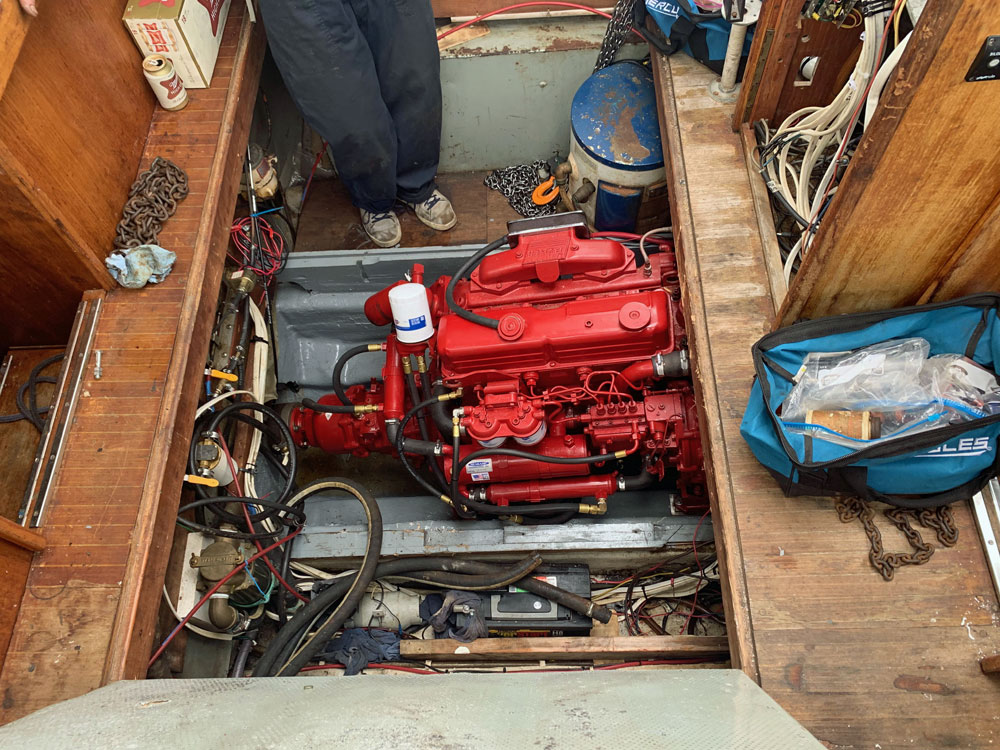 Looks pretty clean...
Looks pretty clean...Sail Inventory & Rigging Check: An Expert’s Priority
The rig and sails are the most stressed parts of the boat. Before you even agree to a price, you must budget for a full inspection. As a member of the Yachting Journalists Association (YJA), I always stress the importance of the rigging survey. A rig failure offshore is an emergency you can avoid by being diligent now.
- Standing Rigging: Check the terminal ends for cracking and corrosion—especially the swages. Look up the mast to ensure the mast extrusion is straight and undamaged.
- Sails: Hoist every sail and inspect the cloth for UV damage, mildew, and broken stitching.
This is a perfect segway to our detailed guide, which focuses on maximising the performance and life of your canvas:
Step 4: The Offer & The Non-Negotiable Survey
If the boat passes your personal inspection and sea trial, it’s time to make an offer. Crucially, your offer should always be contingent on a satisfactory, independent marine survey. This is the single most important action you will take in the entire process.
Finding a Surveyor & Why Independence Matters
You must hire an independent, qualified surveyor who is a member of a professional organisation like the Society of Accredited Marine Surveyors (SAMS) or the National Association of Marine Surveyors (NAMS). Do not, under any circumstances, use a surveyor recommended by the seller or the broker—this is a clear conflict of interest.
The surveyor’s job is to represent your interests and provide an unbiased assessment of the vessel's condition.
For a full breakdown of what to expect, read:
- Pre-Purchase Peace of Mind: Sailboat Survey Checklist Guide (What the inspection should cover).
- Negotiating a Sailboat Purchase: A Guide to Using Your Survey Report (Understanding the report).
Negotiating the Deal: Leveraging the Survey
Once you have that detailed marine survey report in hand, the nature of the conversation shifts entirely. The report is not a pass/fail document; it is a financial tool that allows for a rational, non-emotional discussion about the boat's actual current value.
- Objective Evidence: Use the surveyor's objective findings to back up your request for a price reduction. "The standing rigging is 18 years old and needs replacement per the surveyor's recommendation; that's a £5,000 safety cost that must be factored in."
- Safety vs. Cosmetics: Distinguish clearly between safety-critical issues (e.g., failed engine mounts, compromised mast step) and cosmetic items (e.g., worn cushions, faded gelcoat). Safety issues are non-negotiable reductions; cosmetics are just talking points.
- Your Walk-Away Power: As an experienced sailor, you know the most powerful tool in any negotiation is the willingness to walk away from a bad deal. If a seller refuses to budge on major, safety-related defects, the boat is not "the one."
Step 5: Understanding the Paperwork & Finalising the Deal
Before you can truly consider the deal closed, you must get your head around the documentation. Paperwork issues can cause far more grief than a leaky seacock.
Documentation Deep Dive: Title & RegistrationVAT & Importation
- Bill of Sale & Title: Ensure the person selling the boat is the legal, sole owner. The Bill of Sale legally transfers the ownership (Title).
- Registration & Flagging: This allows the vessel to operate under a specific flag (country) and often requires annual renewal. For official guidance on vessel registration and legal compliance, consult the Maritime and Coastguard Agency (MCA).
- VAT & Importation: If you are buying a used sailboat in or intending to cruise within the European Union (EU) or the UK, you must check the Value Added Tax (VAT) status. Proof that VAT has been paid on the vessel is critical, as unpaid VAT can become a huge, expensive liability if customs officials demand payment.
The Insurance Hurdle
Securing insurance is not the final step, but a conditional one. Most insurers will demand a copy of the satisfactory marine survey report (often less than six months old) before they'll issue a policy, particularly for older or larger vessels. No insurance means no moorage in most marinas, so factor this into your closing timeline.
The First 90 Days: Essential Post-Purchase Actions
Congratulations, you've bought the boat! The survey is done, the funds have transferred, and the key is in your hand. But the work has just begun. These immediate actions will transition the vessel from a seller's boat to your boat, ensuring reliability and safety for your first voyage.
- Immediate Safety Check & Documentation: Change the name on the official papers, but more importantly, ensure all safety gear—flares, life jackets, EPIRB—is in date and registered in your name.
- Through-Hulls: Personally inspect all through-hulls. Open and close them several times. If they're stiff or corroded, tag them for immediate replacement. They are the single greatest risk to sinking at the dock.
- Engine Service: Even if the seller said they had it done, change the oil, filters (fuel and oil), and impeller immediately. This establishes a baseline for your maintenance schedule.
- Sail Inventory & Rig Check: Hoist every sail. Check for stitching failure or UV damage. Climb the mast (or hire a rigger) for a top-down inspection of all clevis pins, cotter pins, and sheave boxes. Better to find a problem on the hard than halfway across the channel.
- Deep Clean & Inventory: Strip the boat out completely. This is the only way to find hidden leaks, assess the condition of the hull liner, and determine what gear is functional and what’s junk.
Summing Up
Buying a used sailboat is a marathon, not a sprint. It demands that you suppress the romantic urge to rush and, instead, embrace the pragmatic discipline of a seasoned mariner. You’ve got to define your goals, stick to your budget, and treat the marine survey as your indispensable ally. Ultimately, the best vessel is the one that is structurally sound, fits your sailing ambitions, and won't leave you bankrupt at the dock. Be patient, be thorough, and you'll soon be heading offshore on a trustworthy boat that will be a source of pride and adventure for many years to come.
This article was written by Dick McClary, RYA Yachtmaster and author of the RYA publications 'Offshore Sailing' and 'Fishing Afloat', member of The Yachting Journalists Association (YJA), and erstwhile member of the Ocean Cruising Club (OCC).
Frequently Asked Questions
What should my emergency budget be after buying a used sailboat?
What should my emergency budget be after buying a used sailboat?
You should aim to have an immediate emergency fund of at least 15% of the purchase price set aside. This is separate from your annual maintenance budget and is for unexpected costs like a failed engine component, a new battery bank, or required rig work identified after taking ownership.
How do I check for osmosis in a fibreglass hull?
How do I check for osmosis in a fibreglass hull?
Osmosis appears as small, fluid-filled blisters on the underwater hull. It’s caused by water penetration into the GRP laminate. While minor osmosis is often manageable, heavy infestation requires an expensive peel and repair. A marine surveyor is the only person qualified to professionally assess the severity of osmosis.
Should I hire a rigging specialist in addition to a marine surveyor?
Should I hire a rigging specialist in addition to a marine surveyor?
For any sailboat over 15 years old, yes, it’s highly recommended. A standard hull surveyor may not climb the mast or have the specialised knowledge to spot common defects like corrosion beneath swages, bent mast sections, or internal rigging wear that could lead to a mast failure.
What is the average depreciation rate for a used sailboat?
What is the average depreciation rate for a used sailboat?
Depreciation is highest in the first few years (similar to a car). After about five years, the rate slows down. Generally, after 10 years, a well-maintained sailboat in a popular class will depreciate at around 3% to 5% per year. Condition and desirable upgrades often slow this rate significantly.
Where is the best place to find official documentation guidelines for my vessel?
Where is the best place to find official documentation guidelines for my vessel?
For UK-flagged vessels or those operating in UK waters, the Maritime and Coastguard Agency (MCA) website is the definitive source for official guidance on registration, documentation, and safety standards. Always defer to official sources for legal compliance.
6. Should I hire a lawyer to handle the sale paperwork?
6. Should I hire a lawyer to handle the sale paperwork?
For high-value boats or those purchased internationally where VAT/tax status is complex, or if you are buying a used sailboat directly from an owner with no broker involved, hiring a maritime lawyer is highly recommended. For simple domestic sales, a broker usually handles the standard documentation.
Resources Used
Recent Articles
-
Modern Boat Electronics and the Latest Marine Instruments
Dec 20, 25 05:27 PM
Should sailboat instruments be linked to the latest boat electronics as a fully integrated system, or is it best to leave them as independent units? -
Hans Christian 43: Classic Bluewater Cruiser & Liveaboard Sailboat
Dec 10, 25 04:37 AM
Explore the Hans Christian 43: a legendary heavy-displacement, long-keel sailboat. Read our in-depth review of its specs, design ratios, and suitability for offshore cruising and living aboard. -
Planning Your Sailboat Liveaboard Lifestyle: An Ocean Sailor's Guide
Dec 06, 25 05:18 AM
Seasoned sailors share their methodical risk analysis for planning a secure Sailboat Liveaboard Lifestyle, covering financial, property, and relationship risks.
